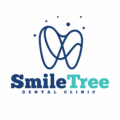Navigating Self-Treatment After Tooth Extraction: A Comprehensive Guide to Optimal Recovery
Tooth extraction is a common dental procedure, often necessary to address issues such as decay, trauma, or overcrowding. While the procedure itself is routine, the success of the recovery process hinges on diligent post-operative care. This expansive guide aims to provide a detailed roadmap for individuals undergoing tooth extraction, offering insights and recommendations to ensure a smooth recovery, minimize discomfort, and mitigate potential complications.
1. Immediate Post-Extraction Care:
The initial 24 hours after tooth extraction demand special attention. The primary goals during this period are to control bleeding and reduce swelling. Patients are typically provided with sterile gauze pads to bite down on, applying gentle pressure to the extraction site. This helps form a blood clot, essential for proper healing. Concurrently, applying a cold compress to the cheek in 15-minute intervals can effectively manage swelling and alleviate discomfort.
Beyond these basics, it’s crucial to emphasize the avoidance of activities that might disturb the extraction site. Patients should refrain from vigorous rinsing, touching the wound with their tongue, or engaging in activities that increase blood flow to the head, such as strenuous exercise.
2. Medications and Dietary Considerations:
Pain management is a crucial aspect of self-treatment after tooth extraction. Dentists typically prescribe pain medications, such as acetaminophen or stronger analgesics, depending on the complexity of the extraction. It is important for patients to strictly adhere to the prescribed dosage to ensure effective pain relief without unnecessary side effects. Over-the-counter pain relievers like ibuprofen can also be beneficial, but their use should align with the dentist’s recommendations. It is essential to strike a balance between managing pain and avoiding excessive reliance on medication.
In addition to medication, applying an ice pack to the affected area in short intervals (15-20 minutes) during the first 48 hours can provide additional relief by numbing the nerves and reducing swelling. However, it is crucial to use a cloth or towel to avoid direct contact between the ice and the skin.
Proper nutrition plays a pivotal role in the recovery period after tooth extraction. While a softer diet may be necessary initially to avoid discomfort and potential damage to the extraction site, it is important to consider the long-term dietary impact on oral health. Soft foods like yogurt, mashed potatoes, soups, and smoothies are excellent choices in the initial days as they minimize strain on the healing area and provide essential nutrients for overall health.
It is crucial to avoid hot and spicy foods, as well as those with small seeds that might irritate the extraction site. As the healing progresses, patients can gradually reintroduce a normal diet, ensuring it includes a balance of nutrients essential for overall health, including vitamins C and D, calcium, and protein.
By following these guidelines for pain management and dietary considerations, patients can promote healing, prevent complications, and support their overall oral health during the recovery period after tooth extraction.
3. Oral Hygiene Practices:
Maintaining oral hygiene after tooth extraction is a delicate balance. In the first 24 hours, the emphasis is on avoiding direct brushing over the extraction site to prevent dislodging the blood clot. Instead, a warm saltwater rinse, composed of half a teaspoon of salt dissolved in eight ounces of warm water, can be performed several times a day. This solution helps keep the area clean without disrupting the healing process.
As the initial healing progresses, patients can gradually resume brushing their teeth, being careful around the extraction site. Soft-bristled toothbrushes are recommended, and patients may consider using an antiseptic mouthwash after the first few days to further promote cleanliness.
4. Monitoring and Seeking Professional Advice:
While self-treatment is integral to a successful recovery, vigilant monitoring of the healing process is equally critical. Patients should pay close attention to the extraction site for any signs of infection, excessive bleeding, or prolonged discomfort beyond the expected timeline.
If any unusual symptoms arise or concerns persist, seeking prompt professional advice is imperative. Dentists can provide specific guidance tailored to an individual’s recovery, ensuring any potential issues are addressed promptly. While general guidelines exist, each person’s recovery is unique, and professional input can make a significant difference in managing complications or ensuring a more comfortable recovery.
In conclusion, the journey of self-treatment after tooth extraction encompasses several nuanced aspects. From the immediate post-extraction care to pain management, oral hygiene practices, dietary considerations, and ongoing monitoring, each component contributes to a comprehensive approach to recovery. Following this extensive guide can empower individuals to actively participate in their healing process, fostering a smoother recovery, minimizing discomfort, and facilitating a swift return to optimal oral health. However, it’s crucial to recognize the variability in individual recovery experiences, and consulting with a dental professional for personalized advice remains a cornerstone of effective post-tooth extraction care.
